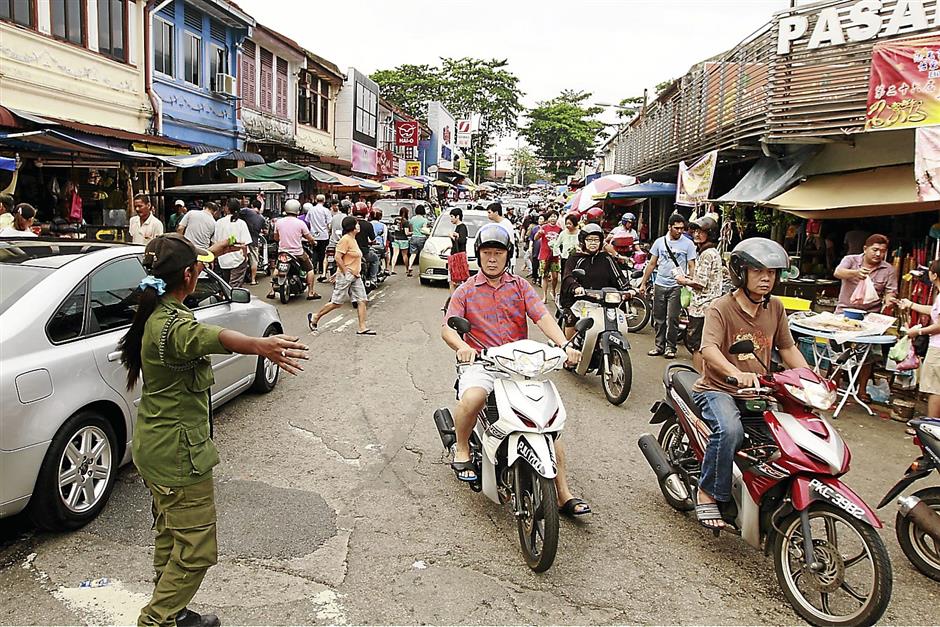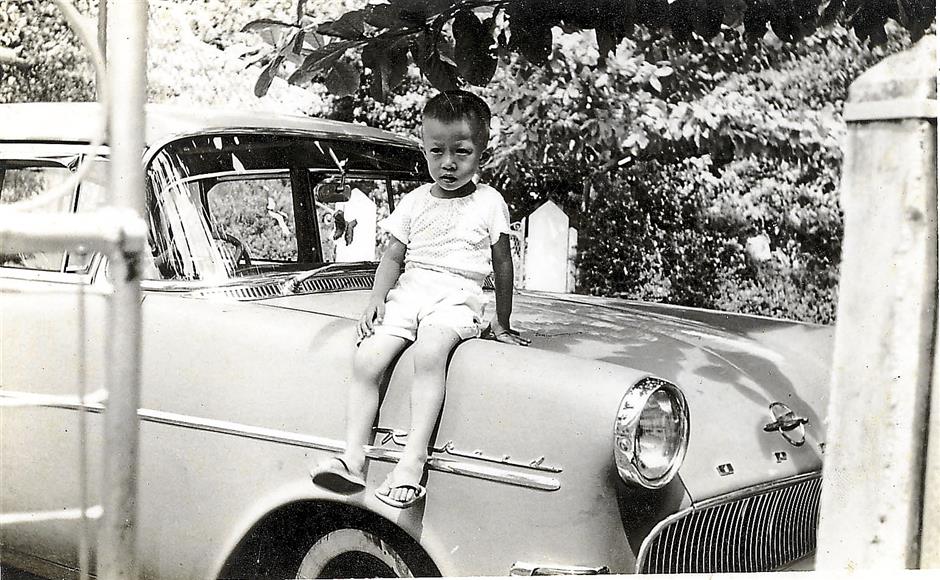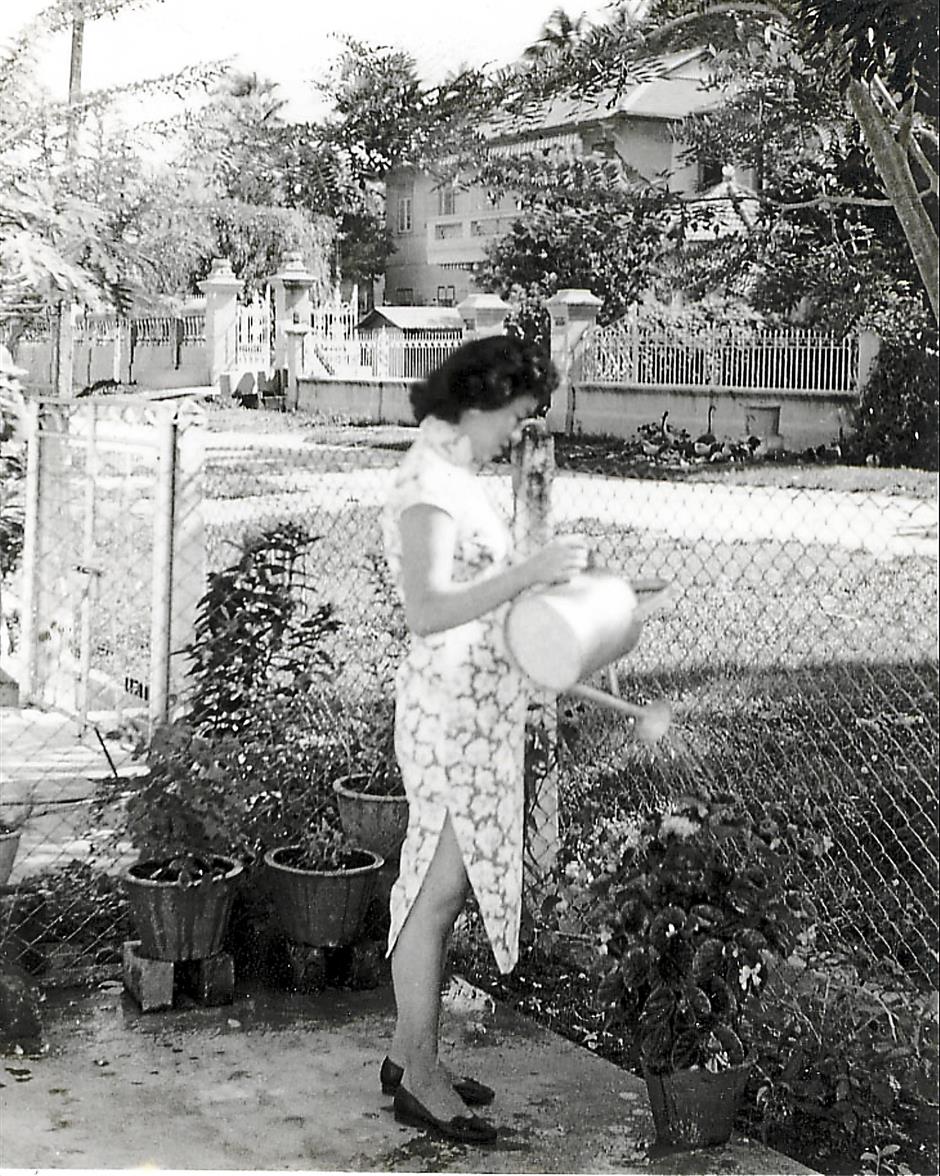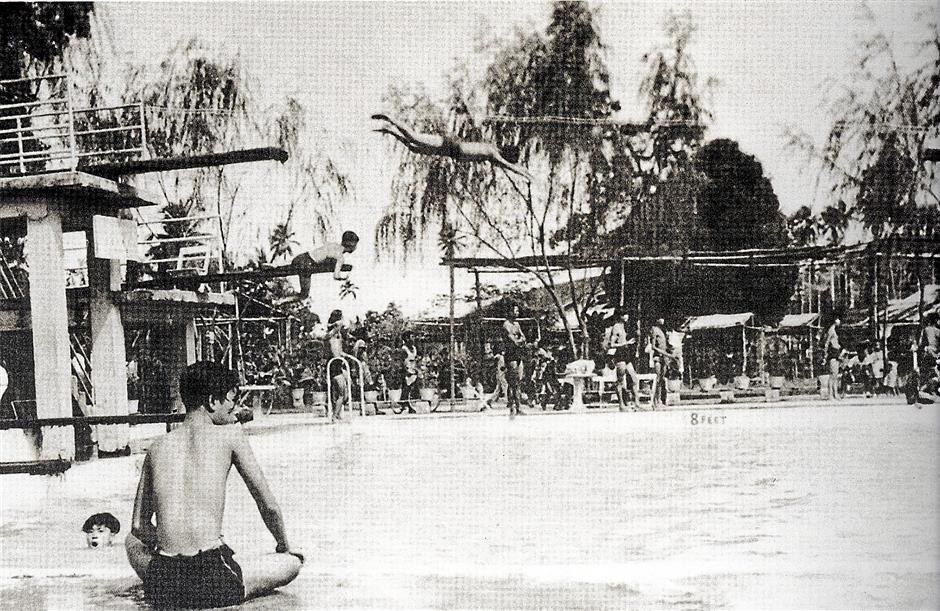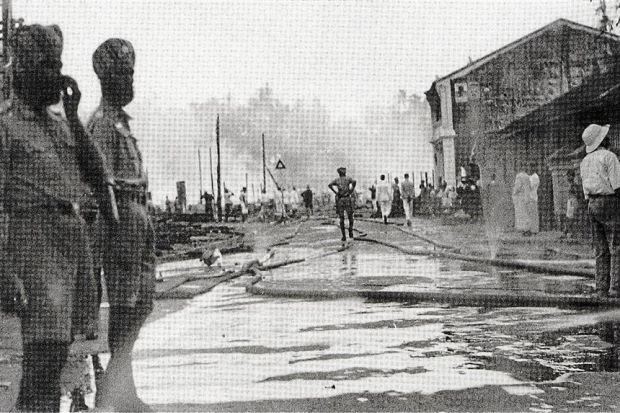
Sikh guards looking at the two remaining buildings – a pawn shop and a police station – which survived the Great Fire of 1935 in Ayer Itam.
VERY few Penangites, I am sure, are aware that Air Itam used to have a swimming club and a zoo. Yes, you read it right.
The Eastern Garden Amusement Park was built in 1950 but it was shut down after several drowning incidents, and the popular park lost its lustre.
I managed to obtain a picture of the swimming pool at this park from the book, Glimpses of Old Penang, but there is little accompanying information.
The park was believed to be located at the foot of Penang Hill.
Then there is Zoo Road, named after the Penang Zoological Gardens sited there, which was supposedly built by a monk in the 1920s. The zoo had a collection of more than 10 types of animals and could well be the earliest zoo in the country.
According to the book, published by The Star in conjunction with its 30th anniversary, the animals included tigers and lions, which were kept in separate artificial caves.
The rest of the zoo was landscaped with Chinese-styled decorative bridges spanning fish and lily ponds.
However, the zoo closed down before the Japanese Occupation because it became too expensive to maintain.
Zoo Road is a link road off the Jalan Air Itam main road. A Penang blogger correctly described Zoo Road as extremely fragmented.
“It is not possible to drive from one end of Zoo Road to the other,” the blogger wrote.
“The northernmost portion runs from Jalan Air Itam to end at Sungai Air Itam. The middle portion of Zoo Road emerges in Kampung Melayu.
“It connects with Jalan Pisang Embun near Lintang Zoo, and continues to the junction with Jalan Kampung Pisang, where it once again disappears. Zoo Road re-emerges the third and final time in Farlim, between Solok Zoo 1 and Jalan Ru 1, to end at Lebuhraya Thean Teik.”
Growing up in Jalan Kampung Melayu, I used to ride my bicycle through the myriad roads and lanes.
Zoo Road is located two roads away from Jalan Kampung Melayu but I never knew there used to be a zoo there. It was set up by Fa Kong, a flamboyant monk. An inscription of Zen verses attributed to him can still be seen on the rock in the garden of the Kek Lok Si temple.
But the biggest story of old Air Itam — which got its name from the murky waters of the river that flowed through it, hitam or itam is Malay for black — was the big fire that razed the former rural village of attap huts and wooden houses to the ground in 1935.
According to Kwong Wah Jit Poh, the oldest existing Chinese daily in the country, the fire started at 1.25pm on Feb 3, which was Chinese New Year’s Day, when a gust of wind blew some burning incense papers onto the attap roof of a house opposite the police station.
By the time two fire engines arrived 45 minutes later, more than 100 homes were gutted, resulting in 1,000 people being made homeless and losses estimated at $200,000 (Straits Dollars) — certainly a huge loss at that time.
Only two buildings survived — a double-storey brick pawn shop and the small, wooden police station next to it.
Described as The Great Ayer Itam Fire, the many incidents of fire that plagued Penang and George Town since its founding in 1786 soon led to more fire-fighting brigades being formed and more equipment bought.
Water pressure in those early days was low and in one case, the firing of firecrackers “during a Chinese funeral ceremony almost led to the destruction of the Supreme Court and the Public Library in December 1916.”
According to the Straits Times issue of March 8, 1935, efforts to raise funds to help the victims through the Ayer Itam Relief Fund proved disappointing.
The fundraising activities included a football match between the Penang Chinese FA and Penang Mohammedan FC while Chinese tycoon Aw Boon Haw of Singapore donated $2,000.
But the Straits Times reported in its April 18, 1948 issue that the fire in Ayer Itam had its good turn as a township of brick houses soon emerged with many people from George Town travelling to Ayer Itam — presumably at the present wet market — to shop on Sunday.
The population of Ayer Itam in 1947 was 13,468 people, according to the newspaper.
It reported that in the open market, “squirrels, puppies, turtles and monkeys fret in cages” were on display, adding an exotic touch to the place.
Penangites not familiar with the state’s history may be surprised at the existence of cinemas, amusement parks, clubs and even a zoo in old Penang. However, it has to be remembered that by the 1930s “more than 40 steamship lines connected Penang to the rest of the world, which make Penang one of the most important and busiest hubs in the region,” as one report said.
It was only natural that various kinds of entertainment could be found in Penang at that time, including cinemas, amusement parks and gambling establishments.
The Penang economy took a turn for the worse during the depression in the mid-19th century, but Air Itam continued to draw in local and foreign tourists because of the Kek Lok Si temple and Penang Hill.
But for Penangites like me, it is the popular asam laksa stall at the wet market, said to offer the best asam laksa in Malaysia, that pulls in the crowds.
I still make it a point to go back home to Jalan Kampung Melayu, where my parents still live, at least once a month. Air Itam, for me, is still home.


